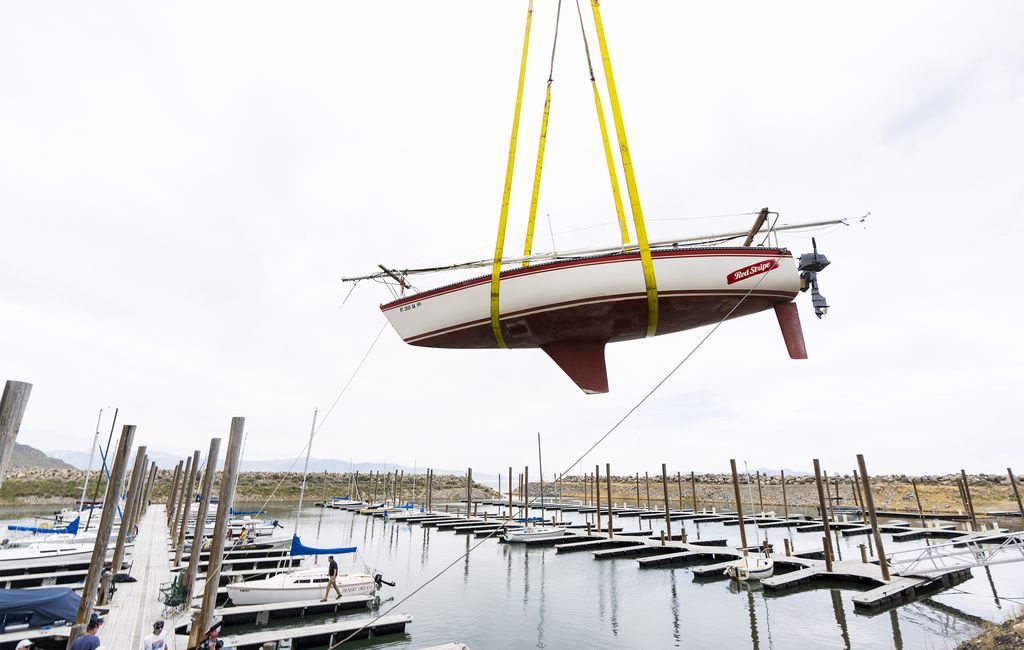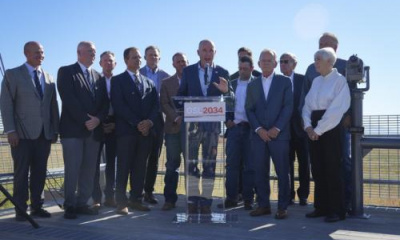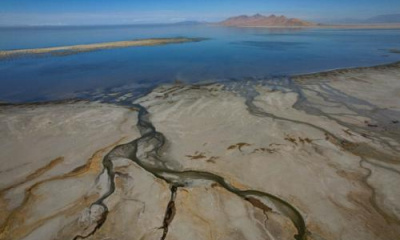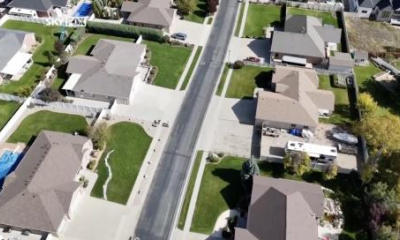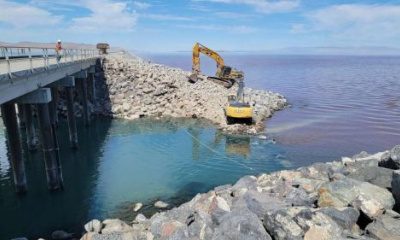Marinas at the lake’s state parks were high and dry last year, but a historic amount of snowfall has also raised sailors’ spirits.
The boats are back and the sailors are stoked.
The water at Great Salt Lake State Park and Marina is up five and a half feet since the lake hit a record-low elevation in November. It swelled more than a foot in just the last month, thanks to a record-breaking snowpack and subsequent runoff. And the salty lake sailing aficionados couldn’t be happier.
“It’s so nice to be back on the lake,” said Ogden resident Chase Burch, whose boat was lowered back into the slips as part of “crane day” held on Tuesday.
“And,” he added, “it’s pretty unexpected.”
The last of the marina’s boats were pulled in August as the lake’s water continued receding to unprecedented levels. Brine flies, a foundation of the lake’s food web, were wiped out. Spiking salinity levels threatened brine shrimp as well. Lake-based industries struggled. Lawmakers scrambled to create policies reversing the lake’s decline, but no easy solutions emerged.
“Everyone was like, ‘The game’s over. That was nice while it lasted,’” Burch said.
Then the snow came. And kept coming.
Burch said he is looking forward to returning to the lake’s serenity. Sailors at the Great Salt Lake don’t face the crowds seen at other lakes and reservoirs across Utah, since the lake spans hundreds of square miles and its salty water tends to be too corrosive for the metal parts on motorboats.
“It’s just this massive lake, and there’s hardly anybody out there,” he said. “You get a nice sense of solitude and a little bit of adventure.”
After crane day, the Great Salt Lake marina now has about 50 sailboats anchored, according to the Utah Division of State Parks. And there is a surge of optimism that all but dried up when the lake hit its first record low in 2021, then continued shrinking.
“Happy’s putting it mildly,” said state parks spokesperson Devan Chavez. “It really filled me with joy when I saw where the water’s at in the marina today.”
Still, he cautioned, the lake isn’t in the clear. It needs to rise another five feet or so to reach a sustainable elevation and stop blowing toxic dust. At least four of the boats stacked in the marina’s parking lot are too big to launch at the lake’s current elevation. And only a fraction of the park’s 320 slips are occupied.
Antelope Island’s marina, which has mostly been bone-dry for the last three years, barely has enough water to support kayaks and paddleboards.
“But there is some water in there,” Chavez said, “which is good news for us.”
A declining Great Salt Lake isn’t a problem that only recently surfaced. State resource managers dredged the Great Salt Lake State Park’s marina by several feet in 2016 in an effort to keep it operational. They plan on dredging it again at a cost of $4 million. Exact plans for the project haven’t been finalized.
Meanwhile, the water consumption habits which caused the lake to drop to record lows largely remain unchanged.
The potential peril still facing the lake isn’t lost on boaters like Burch.
“Just because we had this one banner year of snow,” he said, “in the long term, we’re probably not gonna have a winter like that again, so we need to conserve water in order to keep this going.”

